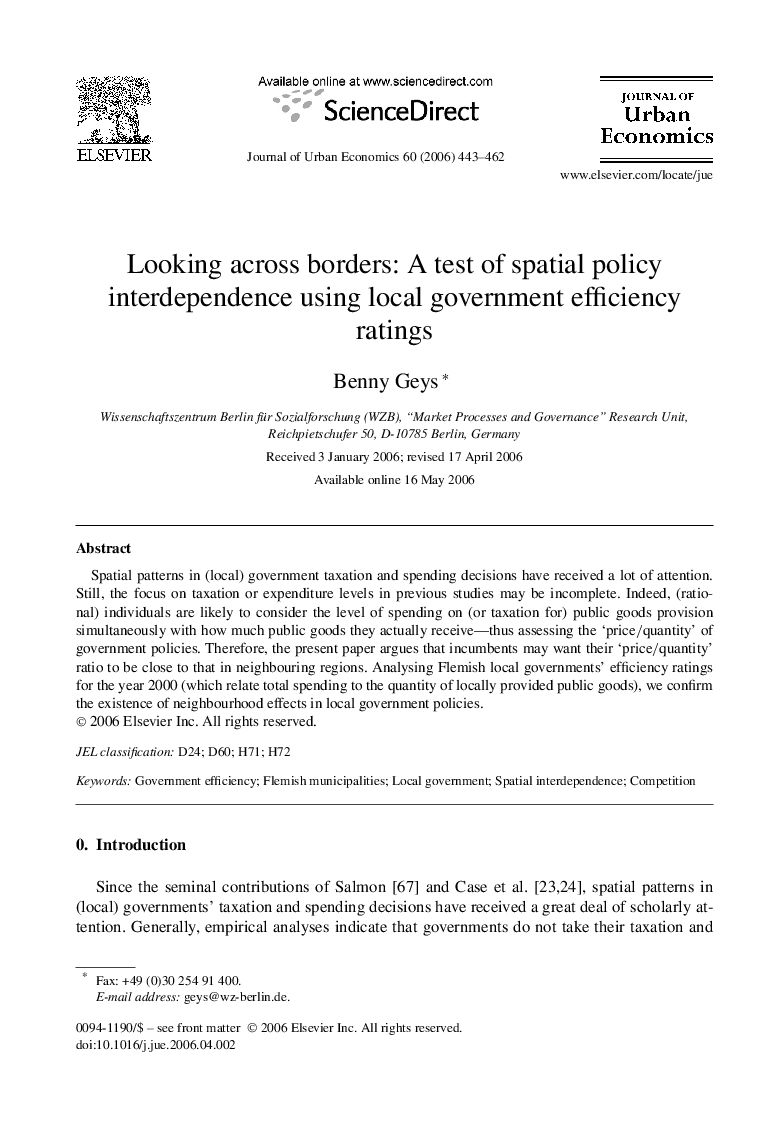| Article ID | Journal | Published Year | Pages | File Type |
|---|---|---|---|---|
| 972001 | Journal of Urban Economics | 2006 | 20 Pages |
Spatial patterns in (local) government taxation and spending decisions have received a lot of attention. Still, the focus on taxation or expenditure levels in previous studies may be incomplete. Indeed, (rational) individuals are likely to consider the level of spending on (or taxation for) public goods provision simultaneously with how much public goods they actually receive—thus assessing the ‘price/quantity’ of government policies. Therefore, the present paper argues that incumbents may want their ‘price/quantity’ ratio to be close to that in neighbouring regions. Analysing Flemish local governments' efficiency ratings for the year 2000 (which relate total spending to the quantity of locally provided public goods), we confirm the existence of neighbourhood effects in local government policies.
